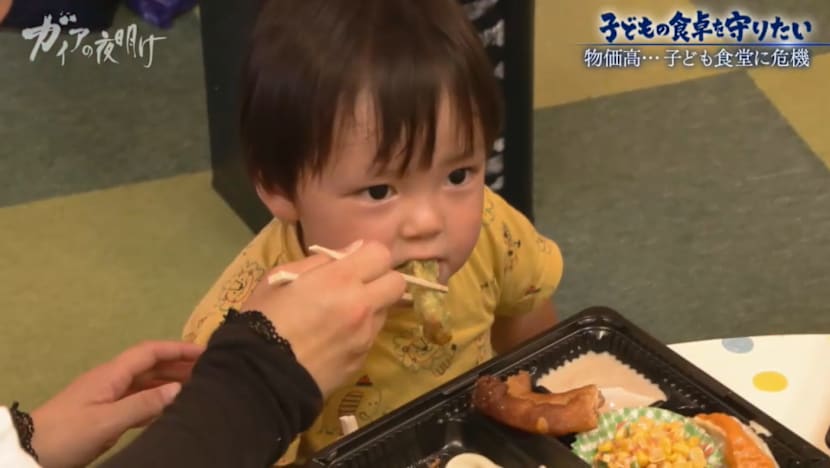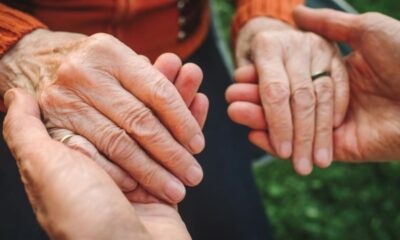Lifestyle
Communities Unite to Combat Rising Child Hunger in Japan

As child poverty rises in Japan, communities are taking action to ensure that children do not go hungry. In Saitama, a modest flat houses Ai (not her real name), a first-year middle school student, and her mother, Toshiko. After her divorce ten years ago, Toshiko left her job in healthcare due to mental health challenges and diabetes, relying solely on welfare support. “The money we get is nowhere near enough,” she states. “Prices keep rising, but the benefits stay the same.”
The financial strain has led to alarming situations where Ai does not always have enough to eat. “Quite often,” she admits when asked how often she goes without meals. “It’s common to only have one meal a day. Yesterday, I just had spinach miso soup. That’s it.” According to the OECD, approximately 11.5 percent of children in Japan live in poverty, with the country ranking 19th among developed nations in this regard.
Support for families like Ai’s comes from organizations like Sainokuni Children’s and Youth Support. Izumi Sekiguchi, a support worker, visits families over ten times a month to provide assistance. “Of course, I hope her home becomes a place of comfort for her,” Sekiguchi says. “But I feel children’s environments are worsening more and more.” On a recent visit, she provided Ai with a supermarket lunch box, highlighting the stark reality that meals are often consumed in silence, with no dining table available.
The issue of child hunger has sparked initiatives across Japan. In Chiba City, the Tsugano-wa Children’s Cafeteria operates monthly, serving around 150 meals each time. “This cafeteria is the thing I look forward to the most,” one child expressed. “At home, my parents are busy working, so they’re hardly ever there. But here I can talk to people properly.”
Director Terumi Tanaka manages the cafeteria, funded primarily by local business donations. Monthly food costs reach about 100,000 yen (approximately $900), and Tanaka emphasizes the importance of quality ingredients, using Koshihikari rice. “I bought it last month. Now this is all that’s left,” she notes, underscoring the challenges of rising prices.
Children’s cafeterias, known as kodomo shokudo, have emerged as vital community hubs in response to child poverty. There are now over 18,000 such cafeterias across the country, primarily run by non-profit organizations and volunteers. Makoto Yuasa, a specially appointed professor at the University of Tokyo, attributes the growth of these cafeterias to declining community ties. “Primary schools are closing down. Shopping streets become shuttered arcades. The connections within communities are fading. People want to bring those ties back,” he explains.
One significant contributor to the fight against child hunger is Food Bank TAMA, led by Seiichiro Shibata. He collects near-expiry food from businesses and individuals to distribute to children’s cafeterias and families in need. “If I see a hungry child right there, I can only give them food to eat,” Shibata states. However, he shares the difficulties faced by his organization. “In the past year, both the food received and the food distributed dropped by half. Price hikes just keep coming,” he says, noting that raw material costs have also risen.
To adapt to these challenges, Shibata has installed commercial freezers at a local factory to better store frozen food donations, including ready-to-eat items. His efforts benefit various children’s cafeterias, like Fukuro House in Hachioji. “So many children come hungry. Donations like this really help,” says its director, Akina Hosoda.
Support from the private sector has also emerged. In Tokyo’s Itabashi Ward, a former bank branch has been repurposed into Atelier Banrai Itabashi, a free facility run by Sumitomo Mitsui Financial Group (SMFG) for upper primary school pupils. The facility includes a library, study space, and a children’s cafeteria. “It’s not just doing good for society and community,” says staff member Ryoko Ohkaya. “It’s aligned with our strategies and focus areas.”
Okhaya, who has transitioned from corporate sales to charity work, believes that social contributions can effectively tackle community issues. The facility also hosts educational programs, including a recent hands-on class by House Foods, where children learned about making fruit desserts. “I learnt that calcium and pectin together connect and make it springy,” one child remarked after the session.
Despite these initiatives, many support systems remain fragile. Government subsidies, such as the Local Child Life Support Project offering up to 3 million yen annually, have limited uptake due to low awareness and complex application processes. As a result, many cafeterias struggle to secure necessary funding.
Individuals like Tanaka and Shibata continue their work with determination. “As long as I’m well, I want to keep doing this,” Shibata says. “If it helps someone, that makes me so happy.” Their dedication reflects a broader communal effort to combat child hunger and foster connections among families facing economic hardship.
-

 Lifestyle3 months ago
Lifestyle3 months agoHumanism Camp Engages 250 Youths in Summer Fest 2025
-

 Sports3 months ago
Sports3 months agoDe Minaur Triumphs at Washington Open After Thrilling Comeback
-

 Business4 months ago
Business4 months agoKenvue Dismisses CEO Thibaut Mongon as Strategic Review Advances
-

 Sports4 months ago
Sports4 months agoTupou and Daugunu Join First Nations Squad for Lions Clash
-

 Top Stories4 months ago
Top Stories4 months agoColombian Senator Miguel Uribe Shows Signs of Recovery After Attack
-

 World4 months ago
World4 months agoASEAN Gears Up for Historic Joint Meeting of Foreign and Economic Ministers
-

 Business4 months ago
Business4 months agoOil Prices Surge Following New EU Sanctions on Russia
-

 Entertainment3 months ago
Entertainment3 months agoDetaşe-Sabah Violin Ensemble Captivates at Gabala Music Festival
-

 Health3 months ago
Health3 months agoNew Study Challenges Assumptions About Aging and Inflammation
-

 Entertainment3 months ago
Entertainment3 months agoBaku Metro Extends Hours for Justin Timberlake Concert
-

 Business4 months ago
Business4 months agoU.S. House Approves Stablecoin Bill, Sends to Trump for Signature
-

 Top Stories4 months ago
Top Stories4 months agoRethinking Singapore’s F&B Regulations Amid Business Closures









